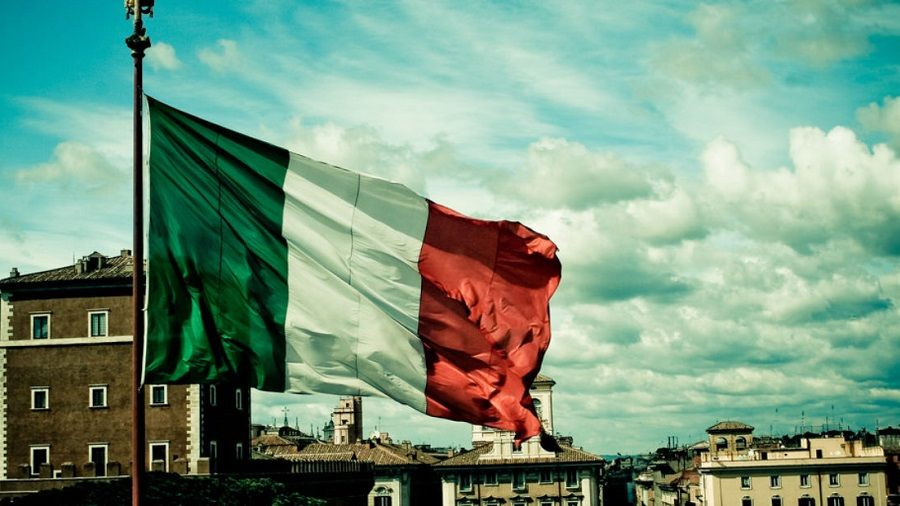The second pandemic year was yet another period in which weather extremes appeared to resonate warnings about the impact of global warming on the planet.
Amidst floods, droughts, fires and flooding, human lives were lost to tragedies that, despite being often unavoidable by man, are a visible consequence of the galloping emission of carbon into the atmosphere – which did not cool off as the world recovered from Covid’s first blow. 19, as thought.
However, there was no lack of pressure. From COP26, in Glasgow, an agreement emerged that mentions the need to increasingly reduce dependence on fossil fuels. For 2022, there are still loose ends to be resolved, and the events of the previous year will help to put increasingly aggressive and recurring event scenarios into perspective.
A CNN gathered a compilation of the main environmental themes of 2021. Check it out:
January: Snow covered Madrid
The Filomena storm that hit Spain between the 6th and 11th of January left the Spanish capital all white and paralyzed for days, as it did not happen in 50 years.
The snow disrupted air traffic, blocked roads and the supply of goods, people and left tracks across much of Spain. Three people died from the tragedy.
Spain’s capital was classified as a “disaster area” by the local government, with an accumulated loss of more than 1.4 billion euros.
February: UN Assembly for the Environment ends triple emergency signal
Held online because of the pandemic between the 22nd and 23rd, the UN Assembly for the Environment ended with an emphatic warning sign that would serve as a starting point for a year with a strong environmental theme.
In the Assembly, authorities defended that the world needed to be aware that the environmental, biodiversity and pollution crises are one and the same.
“It is increasingly evident that environmental crises are part of the journey ahead. Forest fires, hurricanes, record high temperatures, unprecedented winters, locust pests, floods and droughts have become so common that they don’t always make headlines,” Kenyan President Uhuru Kenyatta said in a statement at the Assembly.
Many of the events cited by Kenyatta would actually be observed throughout 2021.
March: torrential rains in Australia
Nothing like it had been seen for over a century. Four days of torrential rain in Australia left 40% of the country on alert. Approximately 10 million people were affected – a significant number for a country with a population of 25 million.
Sydney, one of the main cities in the country of Oceania, saw rain in March more than three times the volume forecast for that month.
April: Climate Summit signals light at end of tunnel
After spending the election period contrasting with his opponent Donald Trump on his views on climate change, US President Joe Biden convened a Climate Summit in order to pre-empt new agreements before COP26 takes place and try to regain the role American protagonist in the matter.
Several countries announced ambitious targets at the Climate Summit. The hosts Japan, Canada and the European Union have announced targets to reduce about half of emissions by 2030. President Jair Bolsonaro (PL) promised that Brazil would achieve climate neutrality by 2050, a 10-year advance on the previous target .
May: Fires in California
On May 17, an unusual fire on the outskirts of Los Angeles caused the forced displacement of approximately 1,000 people. The episode alerted authorities and the population that the forest fire season would be severe.
The arrival of summer would bring even more fire to the region. Between May and October, the amount of burned area became the largest in the historical series.
June: Northeast US heat waves
The hottest summer in American history, according to NOAA records, left hundreds dead in states like Oregon and Washington. On the border with Canada, temperatures reached 49.4ºC.
In the Canadian district of British Columbia, thermometers registered 49.5°C on June 29 – the peak of a streak of days that broke all the region’s historic records.
Scientists pointed out the event as inevitably linked to the effect of climate change, as the region is not naturally prone to record such temperatures.
July: tragic floods in Germany
On the European continent, summer brought a heavy rainy season. More than 160 people have died in Germany as a result of historic floods. The tragedy was considered the worst in the country since World War II.
Then-Chancellor Angela Merkel, who called the scenes “ghostly,” also linked the event to climate change and said the country needed to be faster to prepare for them.
August: Hurricane Ida
More than 1 million people were without electricity in Mississippi as a result of Hurricane Ida. The economic losses were also large-scale: the damage to US offshore energy production infrastructure was the biggest since successive hurricanes in 2005 disrupted production for months, according to the latest data and historical records.
The climatic event, according to the scientists, had all the characteristics predicted for extreme events caused by climate change: it produced more rain, moved more slowly over the continent and generated more disturbances on the coast.
September: Amazon, worst devastation in a decade
More than 4,000 football fields every day. This is the rate of devastation of the Amazon rainforest in September, according to data from the Deforestation Alert System of the Amazon Institute of Man and Environment (Imazon). But deforestation in the forest had been accumulating throughout the year.
In September, six months were already counted as the worst of the decade. The others were March, April, May, July and August. October would also register a new threshold for forest removal.
According to the National Institute for Space Research (Inpe), deforestation in the Amazon reached 13,235 square kilometers between August 1, 2020 and July 31, 2021, up 21.97% compared to last year.
October: water crisis
Records of the water crisis show how serious the situation is in several points, mainly in the Brazilian Southeast. This was the worst crisis in the last 91 years, experts said. The Paraná River, when retreating more than 200 meters, for example, left exposed the ruins of the ancient city of Rubinéia.
The lack of rain caused thermoelectric plants to be activated by Anatel – which generated an increase in the light tariff and also meant more carbon emission into the atmosphere.
The situation was not unique to Brazil. In the United States, a severe drought has caused 93 percent of the American West to be drought at some level, officials said. Problems have been reported in California, Nevada, Oregon, Idaho, Utah and Montana.
November: COP26 sets a new tone of urgency to the environmental agenda
The holding of the 26th UN Conference of the Parties between October 31 and November 14 mobilized all global leaders in what was considered one of the first major post-discovery events of Covid-19.
The final agreement, sewn into the “extension” of the conference, makes an unprecedented mention of the role of fossil fuels in the climate crisis. As a result, countries agreed to demand a gradual reduction in the use of coal and inefficient fossil fuel subsidies.
At the summit, Brazil promised to reduce 50% of greenhouse gas emissions by 2030 and neutralize carbon emissions by 2050, as announced by minister Joaquim Leite on November 1st. The previous target promised a 43% reduction in 2030.
One chapter that remained open, however, was the promised financing of US$ 100 billion for developing countries, a topic also dear to Brazil.
December: cyclones in Bahia and tornadoes in the US
The last month of the year also arrived with scenes of helplessness coming from southern Bahia and the state of Kentucky, in the United States.
In Bahia, the passage of cyclones generated strong storms that affected more than 220 thousand people. At least 51 cities in Bahia are in an emergency situation. The federal government recognizes emergencies in 17 cities in the state.
At least 12 people died as a result of the tragedy, in addition to 15,199 being left homeless and 6,371 homeless.
In the US, multiple tornadoes hit the state of Kentucky and killed more than 100 citizens. Images before and after the tornadoes show villages and towns completely changed as a result of the rains.
President Joe Biden called the events “the worst, most devastating and deadliest tornadoes in Kentucky history.”
*With information from Reuters
Reference: CNN Brasil
I’m James Harper, a highly experienced and accomplished news writer for World Stock Market. I have been writing in the Politics section of the website for over five years, providing readers with up-to-date and insightful information about current events in politics. My work is widely read and respected by many industry professionals as well as laymen.






